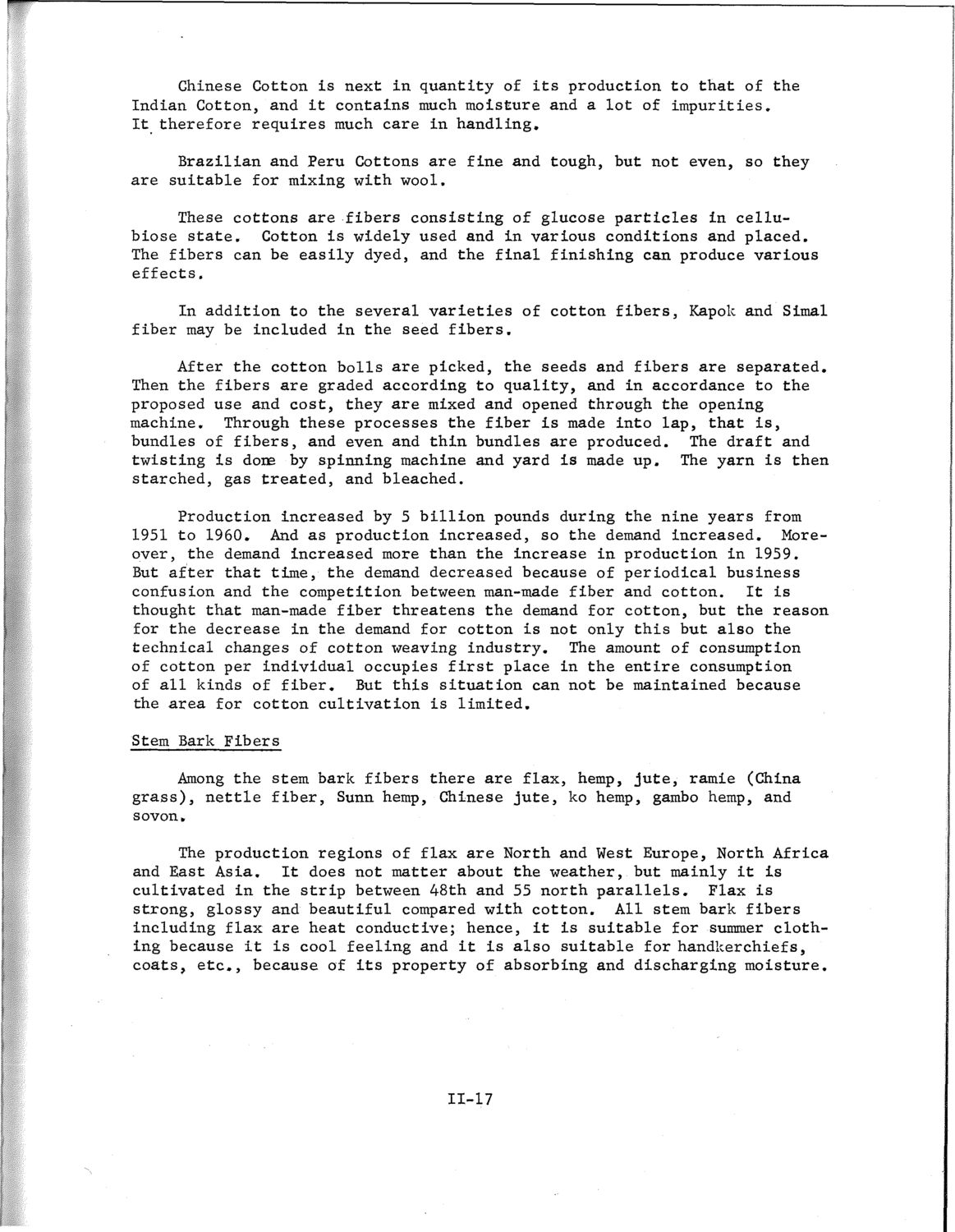| |
| |
Caption: SWE - Proceedings of the First International Conference of Women Engineers and Scientists
This is a reduced-resolution page image for fast online browsing.

EXTRACTED TEXT FROM PAGE:
Chinese Cotton is next in quantity of its production to that of the Indian Cotton, and it contains much moisture and a lot of impurities. It therefore requires much care in handling. Brazilian and Peru Cottons are fine and tough, but not even, so they are suitable for mixing with wool. These cottons are fibers consisting of glucose particles in cellubiose state. Cotton is widely used and in various conditions and placed. The fibers can be easily dyed, and the final finishing can produce various effects. In addition to the several varieties of cotton fibers, Kapok and Simal fiber may be included in the seed fibers. After the cotton bolls are picked, the seeds and fibers are separated. Then the fibers are graded according to quality, and in accordance to the proposed use and cost, they are mixed and opened through the opening machine. Through these processes the fiber is made into lap, that is, bundles of fibers, and even and thin bundles are produced. The draft and twisting is done by spinning machine and yard is made up. The yarn is then starched, gas treated, and bleached. Production increased by 5 billion pounds during the nine years from 1951 to 1960. And as production increased, so the demand increased. Moreover, the demand increased more than the increase in production in 1959. But after that time, the demand decreased because of periodical business confusion and the competition between man-made fiber and cotton. It is thought that man-made fiber threatens the demand for cotton, but the reason for the decrease in the demand for cotton is not only this but also the technical changes of cotton weaving industry. The amount of consumption of cotton per individual occupies first place in the entire consumption of all kinds of fiber. But this situation can not be maintained because the area for cotton cultivation is limited. Stem Bark Fibers Among the stem bark fibers there are flax, hemp, jute, ramie (China grass), nettle fiber, Sunn hemp, Chinese jute, ko hemp, gambo hemp, and sovon. The production regions of flax are North and West Europe, North Africa and East Asia. It does not matter about the weather, but mainly it is cultivated in the strip between 48th and 55 north parallels. Flax is strong, glossy and beautiful compared with cotton. All stem bark fibers including flax are heat conductive; hence, it is suitable for summer clothing because it is cool feeling and it is also suitable for handkerchiefs, coats, etc., because of its property of absorbing and discharging moisture. 11-17
| |